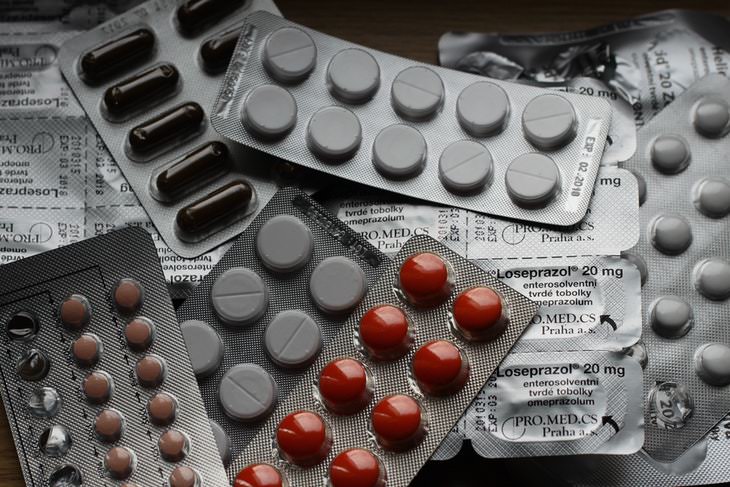Should You Save or Get Rid of Old Medication?

FDA’s Flush List for Certain Medicines
If you received specific disposal instructions from your healthcare provider (e.g., doctor, pharmacist) for your unused or expired medicine, you should follow those instructions to dispose of your medicine. The best disposal option is to find a drug take back location, which may be found in retail, hospital, or clinic pharmacies; and/or law enforcement facilities.
If you don’t have a drug take back location near you, check the FDA’s flush list to see if your medicine is on the list. Medicines on the flush list are those (1) sought-after for their misuse and/or abuse potential and (2) that can result in death from one dose if inappropriately taken. If children, adults, or pets in your home accidentally or intentionally ingest, touch, misuse, or abuse a medicine on the flush list, they can suffer serious consequences including death. An example of a medicine on the flush list is fentanyl transdermal system (also known as a fentanyl patch), which contains an opioid. If a drug take-back program is not available, flushing medicines on the flush list helps keep everyone in your home safe by making sure these powerful and potentially dangerous medicines (when used inappropriately) are not accidentally or intentionally ingested, touched, misused, or abused.
Remember, don’t flush your medicine unless it is on the flush list.
|
Drug Name |
Examples of Products on the Flush List1 |
|---|---|
|
Drugs That Contain Opioids |
|
|
Any drug that contains the word “buprenorphine” |
|
|
Any drug that contains the word “fentanyl” |
|
|
Any drug that contains the word “hydrocodone” or “benzhydrocodone” |
APADAZ, HYSINGLA ER, NORCO, REPREXAIN, VICODIN, VICODIN ES, VICODIN HP, VICOPROFEN, ZOHYDRO ER |
|
Any drug that contains the word “hydromorphone” |
|
|
Any drug that contains the word “meperidine” |
|
|
Any drug that contains the word “methadone” |
|
|
Any drug that contains the word “morphine” |
ARYMO ER, AVINZA, EMBEDA, KADIAN, MORPHABOND ER, MS CONTIN, ORAMORPH SR |
|
Any drug that contains the word “oxycodone” |
CODOXY, COMBUNOX, OXADYDO (formerly OXECTA), OXYCET, OXYCONTIN, PERCOCET, PERCODAN, ROXICET, ROXICODONE, ROXILOX, ROXYBOND, TARGINIQ ER, TROXYCA ER, TYLOX, XARTEMIS XR, XTAMPZA ER |
|
Any drug that contains the word “oxymorphone” |
|
|
Any drug that contains the word “tapentadol” |
|
|
Drugs That Do Not Contain Opioids |
|
|
Any drug that contains the term “sodium oxybate” or “sodium oxybates” |
|
|
Diazepam rectal gel |
|
|
Methylphenidate transdermal system |
|
1 Links in the flush list direct you to specific disposal instructions in each medicine’s labeling (the labeling generally represents the last FDA-approved labeling at the time this webpage was updated). To see the most recently approved labeling see www.fda.gov/drugsatfda or to see the most current labeling see FDALabel at https://nctr-crs.fda.gov/fdalabel/ui/search.
Impact of flushing medicines on the environment
FDA recognizes that the recommendation to flush a few specific medicines when a take back program is not readily available raises questions about the impact of the medicines on the environment and the contamination of surface and drinking water supplies.
In an effort to address this concern, FDA staff published a paper entitled "Risks Associated with the Environmental Release of Pharmaceuticals on the U.S. Food and Drug Administration ‘Flush List’". This paper evaluates the environmental and human health risks associated with the flushing of 15 active ingredients found in these medicines. FDA concluded that these medicines present negligible risk to the environment. However, some additional data would be helpful for confirming this finding for some of the medicines.
FDA believes that the known risk of harm, including toxicity and death, to humans from accidental exposure to medicines on the flush list far outweighs any potential risk to human health and the environment from flushing these unused or expired medicines. Remember only flush medicines on the flush list if a take-back option is not readily available. FDA will continue to conduct risk assessments as a part of our larger activities related to the safe use and disposal of medicines.